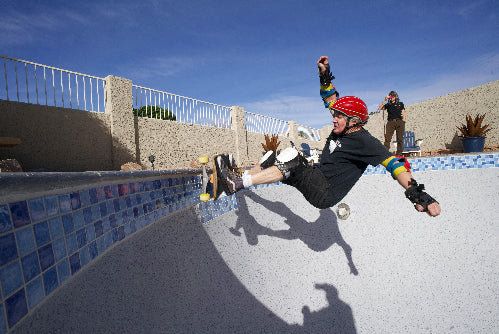Skateboarding often finds itself under scrutiny when it comes to discussions about safety. Many people perceive it as an inherently risky activity, conjuring images of daredevil stunts and spectacular falls. However, these perceptions might not align with the reality of skateboarding as a sport and recreational activity. Let's explore why skateboarding may not be as dangerous as commonly believed, especially when compared to other popular activities.

Skill and Control
One of the key factors influencing safety in skateboarding is skill level. Like any sport, proficiency significantly reduces the likelihood of accidents. Experienced skateboarders develop a keen sense of balance, reflexes, and control over their movements. They learn how to distribute their weight, execute maneuvers, and navigate obstacles with precision. This acquired skill minimizes the risk of injury during routine skating activities.

Protective Gear
Another crucial aspect of skateboarding safety is the use of protective gear. Responsible skateboarders prioritize safety equipment such as helmets, knee pads, elbow pads, and wrist guards. These items provide essential protection against impacts and falls, reducing the severity of injuries or preventing them altogether. When properly equipped, skateboarders can mitigate many of the risks associated with the sport.

Comparative Risk
To put skateboarding's safety into perspective, let's compare it to other popular activities:
1. Cycling: According to statistics, cycling accounts for a significant number of sports-related injuries each year, including head injuries. While helmets are widely encouraged for cyclists, the risk of collisions with vehicles and road hazards remains a significant concern.

2. Football and Soccer: Both sports involve frequent physical contact and the potential for traumatic injuries such as concussions, sprains, and fractures. The competitive nature of these sports often leads to higher injury rates compared to recreational skateboarding.

3. Skiing and Snowboarding: These winter sports are enjoyed by millions worldwide but carry risks of collisions, falls, and injuries from high-speed descents on uneven terrain. While protective gear is crucial here too, the speeds and forces involved can lead to more severe accidents.
 oy
oy
Community and Education
Skateboarding also benefits from a strong community culture focused on safety and education. Skate parks often provide a controlled environment for enthusiasts to practice and learn new skills. Many parks also offer beginner-friendly areas, lessons, and workshops aimed at promoting safe skating practices among participants of all ages.

Conclusion
Skateboarding, when approached with proper technique, adequate protective gear, and respect for one's skill level, can be a safe and enjoyable activity. While accidents can happen in any sport or recreational pursuit, the perceived danger of skateboarding often exceeds its actual risk when compared to other popular activities. As with any physical endeavor, education, preparation, and responsible behavior are key to enjoying skateboarding safely. So, the next time you see someone cruising down the street on a skateboard, remember that they're likely engaging in a thrilling activity that, with the right precautions, can be just as safe as it is exhilarating.


